
We’re very excited to share a bumper Site Explorer update for you today.
We’ve boosted Oubound link and Inbound link reporting, added domain language comparisons, and created a sortable metric to help you judge if a link is site-wide.
The update will let you:
- Get a better breakdown of incoming backlinks
- Identify sites where the language of incoming Anchor Text and Page Titles does not match that site’s language
- Identify high-link, low-quality directory sites
- Find potential site-wide links to you and your competitors
- See domains with a disproportionate amount of multiple languages
- Get a feel for the average number of outlinks for page on any site
- Quickly jump to an IP search for a domain
Ready? Get coffee… there’s a lot to show you…
1: New in Site Explorer Summary: Better breakdown of Incoming Links

We have a guilty secret… we have not been telling you about all the links we know about in Site Explorer! We actually know a lot more, but we didn’t think you would really want to know. That was a mistake in underestimating the sophistication of our user base. Whilst it did make us smile inwardly knowing that our competitors have been chasing numbers that are way off our actual numbers when it comes to link counts, it caused confusion when users pulled out the advanced report in its most expanded form. The main reason for the under-reporting, is when there are two links between Page A and Page B. This is only 1 linking URL, but 2 links. The links themselves may have different properties (anchor text, image flags, no-follows) but essentially it is one referring page.
So we have now helped to unpack this surprisingly complex problem by introducing the concept of a “supplemental index”. We still only report a referring page once in the headline numbers, but the supplemental number makes it much easier to show a more comprehensive breakdown of any site’s incoming links:
This change has allowed us to re-model the Backlink Breakdown section in Site Explorer Summary

As well as the new charts, we have now added clearer percentages for all data items, and there are new backlink counts for:
- Homepage vs Deep Links
- Direct vs Indirect
- ‘Supplemental’ links
- HTTPS
We have also added a similar area for Referring Domains.
New in Site Explorer Summary: Outbound Links
In our last update, we added the number of outbound links (internal, external, and external domains) to our Backlinks tab.
From today, you can now see this information on the Site Explorer Summary screen for ANY crawled URL.
And, as you don’t want to check every single URL on a site to get a feel for the typical number of outbound links on that domain, we’ve also added an average when you search for a domain or subdomain.
Here are the outbound link counts for our blog homepage (left), and the average outbound links for our blog subdomain (right).
This is a great comparison…. You can see that our blog homepage contains almost twice-as-many internal links as the average for our blog, but is slightly below average when it comes to linking to external sites. This probably means that we’re blogging correctly, and helping visitors to delve into articles before sending them off to where they need to go.
New in Site Explorer Summary: Language Matching
We’re excited about this one. What if we could tell you whenever the link is in the wrong language?
Well now we can show you! Majestic had already started to identify URL languages throughout the site. However, we’ve now added language aggregation to domain and subdomain searches in Site Explorer Summary. The exciting bit is that we show both Incoming Languages AND on-domain Languages side-by-side. This makes it incredibly easy to see if a domain doesn’t match incoming and on-site language.
Here are the incoming languages, and on-site languages for the Majestic blog.
The small bar to the left of the language shows the average confidence for each language. At the moment, we measure language at a one-per-page level – that is, a page can only have one language. The confidence level is an average of those confidences.
If we detect that the top incoming language is not the same as the top site language, we will flag this with a red banner.
You can see here that the page titles and links that point to fcbarcelona.es are overwhelmingly Catalan, whereas the site is in Spanish. In this instance, this is completely understandable, but in other cases, this flag may show a mis-match between a site language and it’s incoming backlinks.
Try it out https://majestic.com/reports/site-explorer?folder=&q=fcbarcelona.es
Here’s an example from a domain that may have a problem with a potentially un-natural incoming link language match-up:
Something that’s important to consider when using Majestic languages is that to determine a language, we analyse Anchor Text and Page Titles. If you’re not seeing the language that you expect, it may be because the anchor texts used on that site are in a different language to the rest of the page.
New in Site Explorer Summary (for URLs): Language and Coloured Crawl Results
Site-wide languages are only available for root domains and subdomains.
We have added URL language to Site Explorer. You can find it in the slightly re-modelled area to the right of the Link Profile Chart.
While we were there, we’ve colour-coded the Last Crawl Result to make it easier to notice redirects and crawl errors.
New in Site Explorer Summary – Root IP analysis
The IP for a root domain has always been available in Network Neighbourhood, but it’s not intuitive to search there.
We’ve added a very quick way for you to see the IP of a domain, then click that IP to discover other websites that live on the same IP address.
Click the IP address to take you to…
We love Network Neighbourhood. If feedback for this is positive, we’d love an excuse to spend a bit of time on it.
The new Site Explorer Summary data – at least for now – is available to ALL Majestic users.
2: Improvements in the Referring Domains tab

Our focus hasn’t just been on Site Explorer Summary, we’ve also overhauled the Referring Domains tab.
We realised that we have so much information available for each referring domain, but we only show a slither of that extra info for those brave enough to try out the sort drop downs.
To bring all of the great data out into the open, we have broken Referring Domains into five distinct sections, each capable of standing alone as a useful Referring Domains examination tool.
New in Referring Domains Tab: Default View
This is the new landing page, containing headline Referring Domain information. It is exactly the same as the existing Referring Domains tab, except we’ve replaced the old (and out-of-date) Alexa Rank with one of our Outbound Links metrics, Average External Domains per Page.
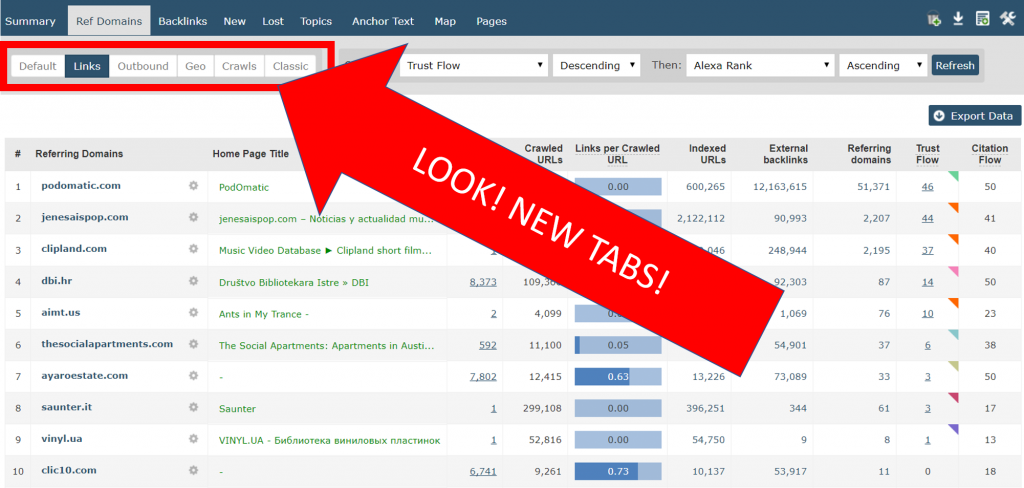
New in Referring Domains Tab: Links View
This is a biggie.
The links tab collects all of the link count information that we have, from the number of times a site links to your search query, to that site’s own crawled URLs, indexed URLs, referring domains and external backlinks.
The exciting bit is the “Links Per Crawled URL”, that you may choose to interpret as a hint of a site-wide link. This divides the number of Backlinks to your search query, by the number of URLs we’ve crawled on that domain.
The second exciting bit is that the Links per Crawled URL field is sortable. Try sorting referring domains by Links/Crawled URL and reverse Trust Flow to find potential site-wide, low-quality sites for your disavow lists.
You may also notice here that the high-level metric counts are blue. That’s because they are now clickable. If you find any interesting domain, you are just one-click from drilling into their own backlinks or referring domains.
New in Referring Domains Tab: Outbound View
This is a sortable view dedicated to our new Outbound links. If you sort your referring domains by Outbound link volumes, you can discover (or discount) links from your personal lists of interest.
New in Referring Domains Tab: Geographic View
This is our UX guy’s favourite view. You now have all of the geographic / geopolitical information that we have on a domain. You can compare the domain languages, TL, root domain IP, and the resolved location of that IP. As in Summary, the IP address is clickable to find other sites on the same address.
To help you scan down the language list, we have colour-highlighted overwhelmingly dominant languages (> 50% of detected language pages).
New in Referring Domains Tab: Crawls View
This may be one of our least-used views, but it shows exactly when we found out about a domain, and how many URLs have been indexed and crawled.
New in Referring Domains Tab: Classic View
Let’s face it, you don’t want the new stuff and just love it the old way. The very last toggle is to put back Alexa and give you the Classic view, just the way you like it.
Improvement in the Referring Domains tab: Drilling Down
We have slightly improved the information that you receive when you drill into the backlinks from one site to another.
3. Improvements to the Backlinks tab (with an apology)

Last month we moved the anchor text over to the right-hand column, thinking that we were doing a good thing.
This was not popular.
Sorry.
We have moved the anchor text back to the left panel.
We’re also sorry if you’d just got used to it being on right and are now annoyed that we’ve moved it back to the left.
We have plans for that Target URL column, so it’s staying on the right. And moving the anchor text means that we have space to add a page title and Primary Trust Flow to the Target URL, so now you can compare source and target page titles, top topics, and anchor text in one easy row.
4: Improvements to the Pages tab

Finally, we have brought some of the new data to your Pages tab, including page language, language confidence, outlinks, and coloured crawl results. We’ve also made Referring Domains and External Backlinks clickable to help drill into the data for individual pages on your site.
That’s today’s update
We’ve worked hard on bringing this new data to everyone, and we really hope there’s something there for you. Everything that we’ve mentioned is available initially on our Fresh index and may not be available on Historic yet. Smaller, or low Trust, sites may take longer to update with the new stuff.
We have decided to go through this update in a live webinar on Thursday 26th October. There will also be the opportunity to ask any questions you may have. You can register here maj.to/2zuZHo1
We really hope you can join us!
Thanks for getting to the bottom of this blog post. See you on the webinar?
- How Important will Backlinks be in 2023? - February 20, 2023
- What is in a Link? - October 25, 2022
- An Interview with… Ash Nallawalla - August 23, 2022








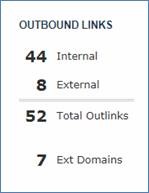
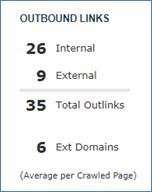





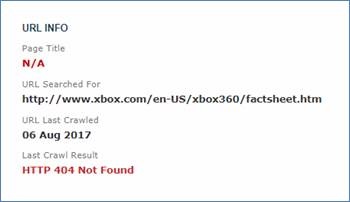
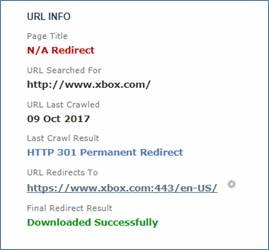
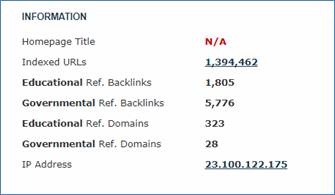
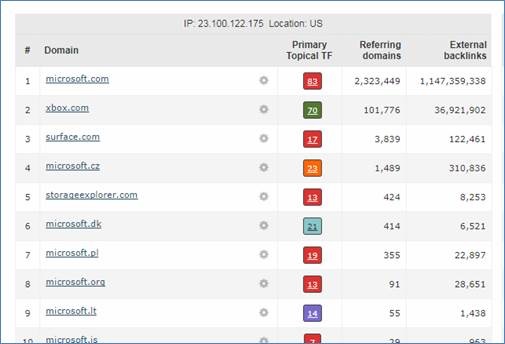







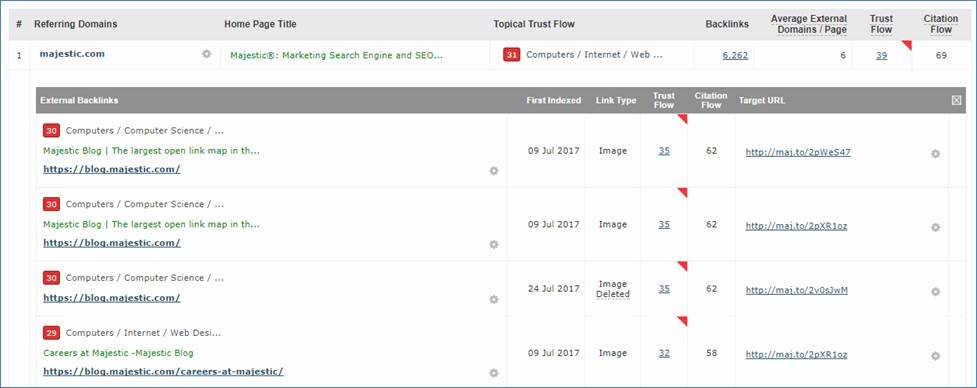


Hi,
We noticed that the new feature related to languages (RefLanguage, RefLanguageDesc,…) is included by default in the API calls (GetIndexItemInfo).
Is there a way to have the previous format without this additional info?
Thanks.
November 6, 2017 at 2:28 pmHi Sylvain,
I’ve double checked internally and I’m afraid the answer is no, there is no way to do this at the moment. We are all very intrigued as to how this would help though?
Nicky
November 9, 2017 at 3:27 pmYeh – why would you want it without that information? It doesn’t cost anymore to have it. You don’t need to use it either.
November 10, 2017 at 12:12 am